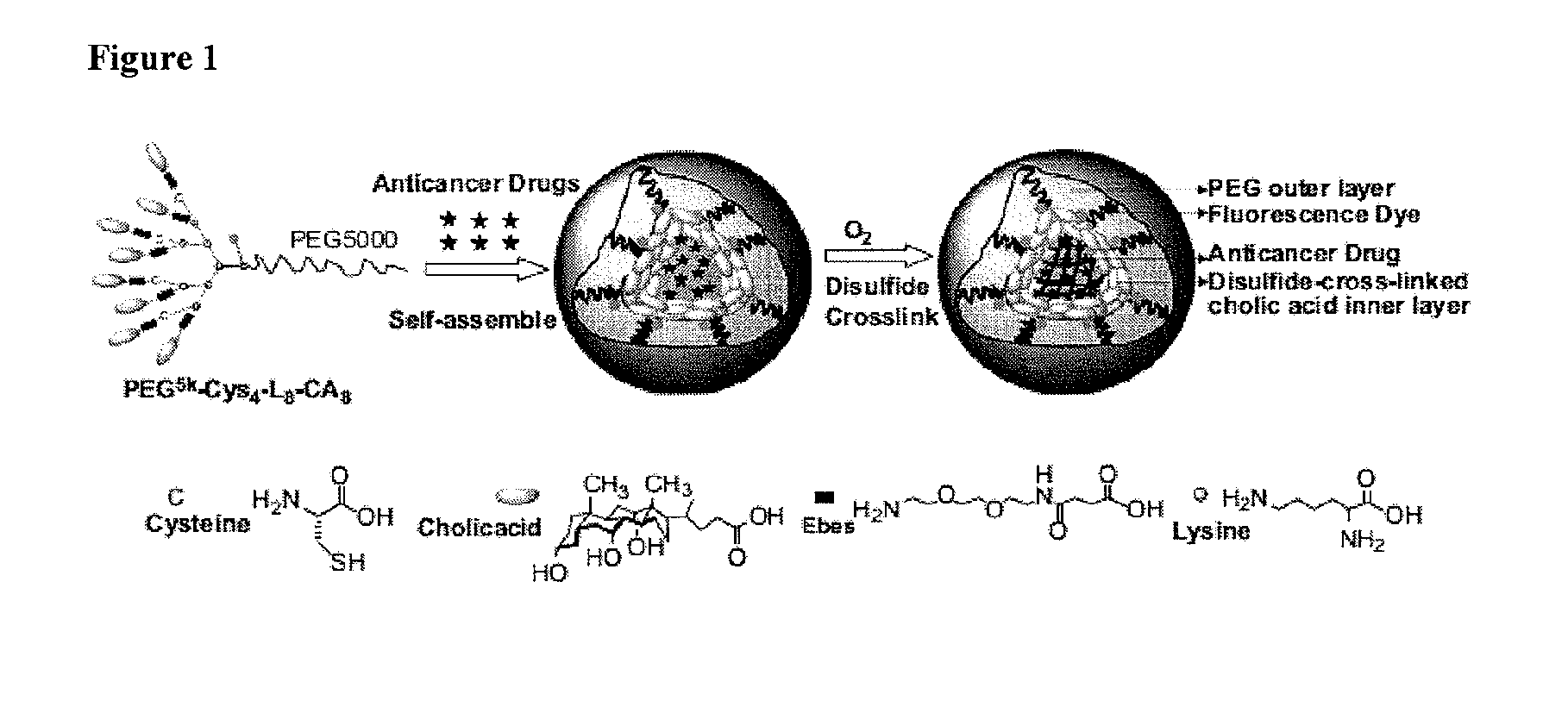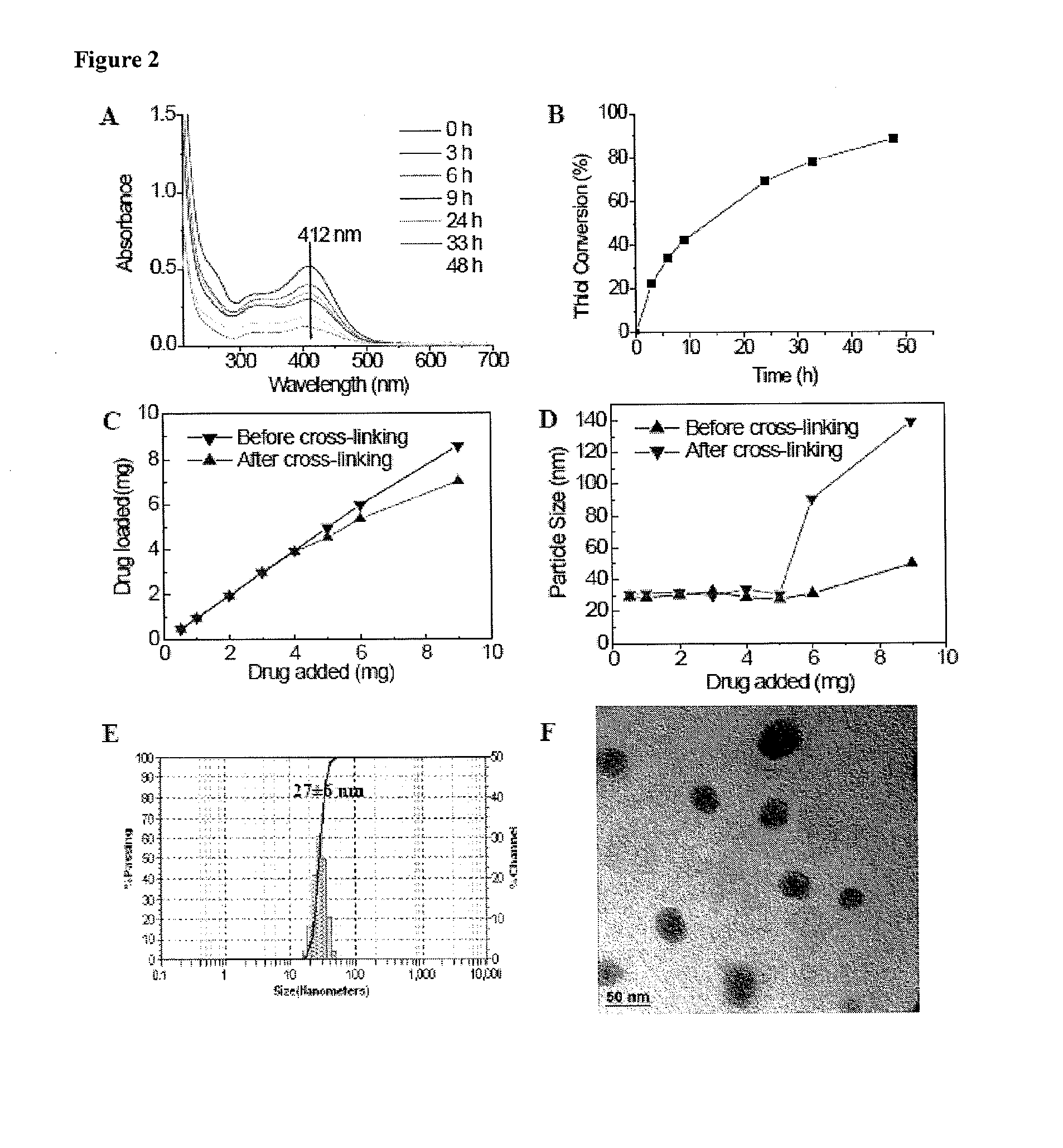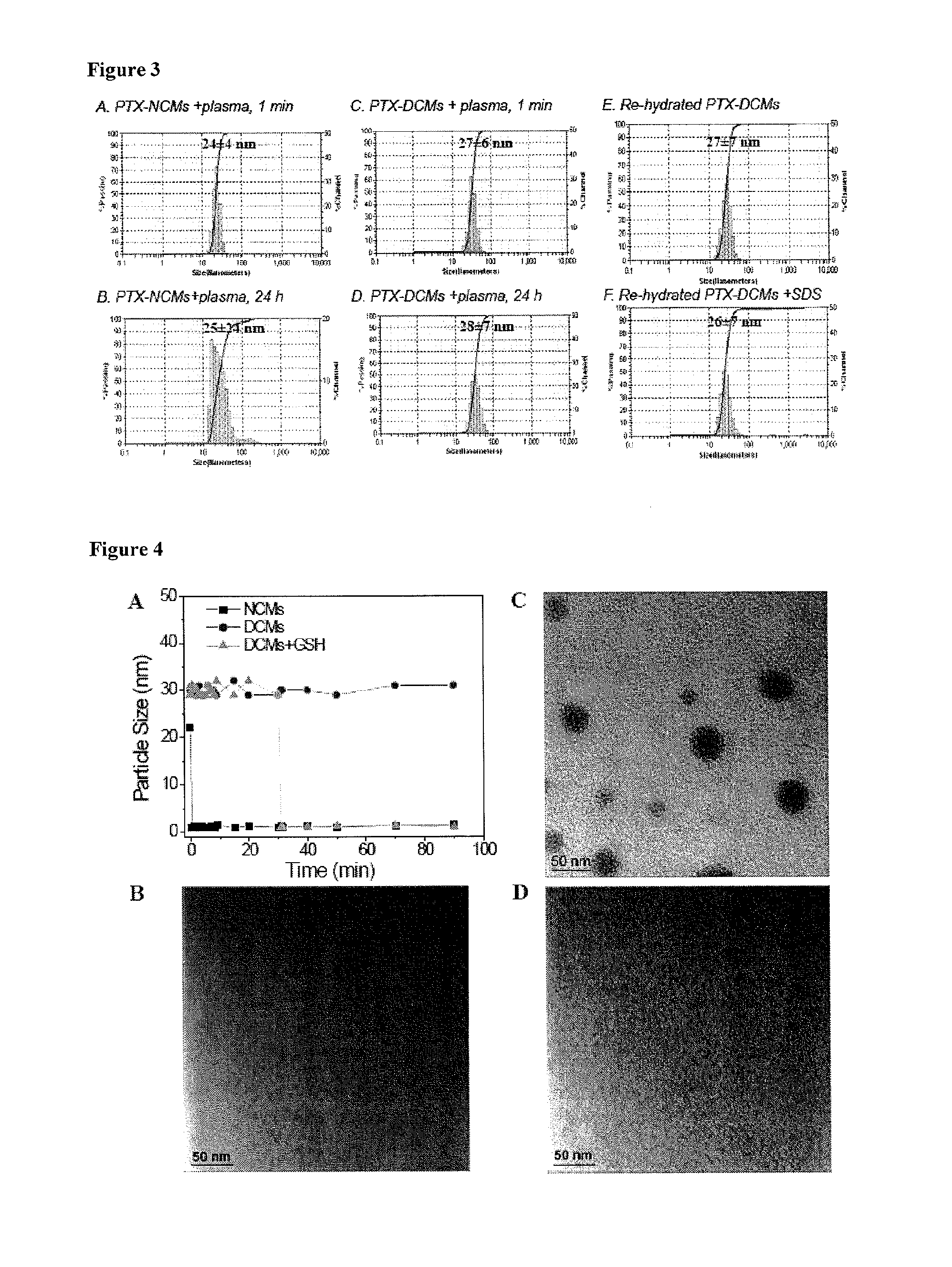Reversibly crosslinked micelle systems
a micelle system and crosslinking technology, applied in the field of reversible crosslinking micelle systems, can solve the problems of limited inducing unwanted side effects, and limiting the extent to which the drug can penetrate into the tumor mass
- Summary
- Abstract
- Description
- Claims
- Application Information
AI Technical Summary
Benefits of technology
Problems solved by technology
Method used
Image
Examples
example 1
Preparation of Thiolated Conjugate (PEG5k-Cys4-L8-CA8)
[0129]The thiolated telodendrimer (named as PEG5k-Cys4-L8-CA8) was synthesized via solution-phase condensation reactions from MeO-PEG-NH2 utilizing stepwise peptide chemistry. The typical procedure for synthesis of PEG5k-Cys4-L8-CA8 was as follows: (Fmoc)Lys(Dde)-OH (3 eq.) was coupled onto the N terminus of PEG using DIC and HOBt as coupling reagents until a negative Kaiser test result was obtained, thereby indicating completion of the coupling reaction. PEGylated molecules were precipitated by adding cold ether and then washed with cold ether twice. Fmoc groups were removed by the treatment with 20% (v / v) 4-methylpiperidine in dimethylformamide (DMF), and the PEGylated molecules were precipitated and washed three times by cold ether. White powder precipitate was dried under vacuum and two coupling of (Fmoc)Lys(Fmoc)-OH and one coupling of (Fmoc)lys(Boc)-OH were carried out respectively to generate a third generation of dendriti...
example 2
Preparation of Disulfide Cross-Linked Micelles
[0132]20 mg PEG5k-Cys4-L8-CA8 telodendrimer was dissolved in 1 mL phosphate buffered saline (PBS) to form micelles and then sonicated for 10 min. The thiol groups on the telodendrimer were oxidized to form disulfide linkages by purging oxygen into the micelle solution. The level of free thiol groups were monitored by Ellman's test over time. The micelle solution was used for further characterizations without dialysis after the level of free thiol groups remained at a constant low value.
example 3
Preparation of PTX Loaded Disulfide Cross-Linked Micelles
[0133]Loaded with Paclitaxel
[0134]PTX was loaded into the micelles by the solvent evaporation method as described in our previous studies. Briefly, PTX (1, 2, 3, 5, 7.5, 9 mg) and PEG5k-Cys4-L8-CA8 telodendrimers (20 mg) were first dissolved in chloroform in a 10 mL round bottom flask. The chloroform was evaporated under vacuum to form a thin film. PBS buffer (1 mL) was added to re-hydrate the thin film, followed by 30 min of sonication. The PTX-loaded micelles were then cross-linked via O2-mediated oxidization as described above. The amount of drug loaded in the micelles was analyzed on a HPLC system (Waters) after releasing the drugs from the micelles by adding 9 times of acetonitrile and 10 min sonication. The drug loading was calculated according to the calibration curve between the HPLC area values and concentrations of drug standard. The loading capacity is defined as the highest drug concentration that can be achieved b...
PUM
| Property | Measurement | Unit |
|---|---|---|
| molecular weight | aaaaa | aaaaa |
| size | aaaaa | aaaaa |
| size | aaaaa | aaaaa |
Abstract
Description
Claims
Application Information
 Login to View More
Login to View More - R&D
- Intellectual Property
- Life Sciences
- Materials
- Tech Scout
- Unparalleled Data Quality
- Higher Quality Content
- 60% Fewer Hallucinations
Browse by: Latest US Patents, China's latest patents, Technical Efficacy Thesaurus, Application Domain, Technology Topic, Popular Technical Reports.
© 2025 PatSnap. All rights reserved.Legal|Privacy policy|Modern Slavery Act Transparency Statement|Sitemap|About US| Contact US: help@patsnap.com



